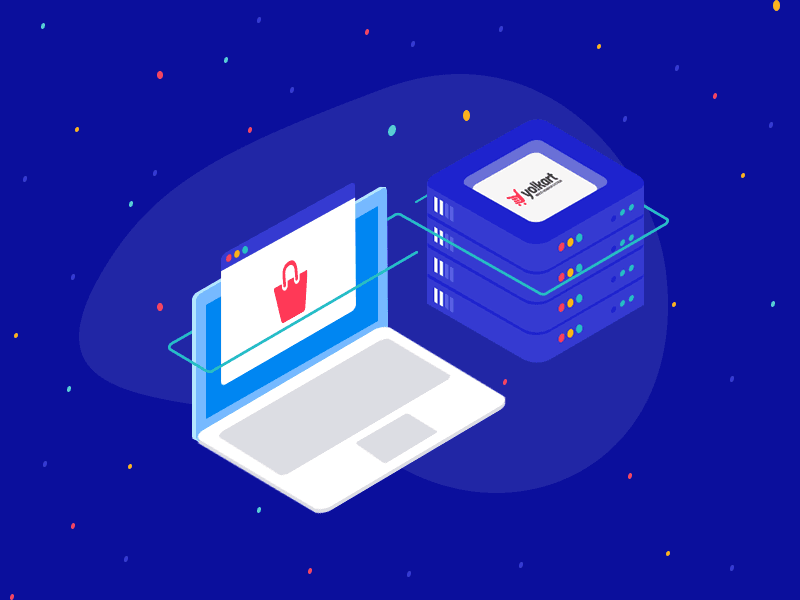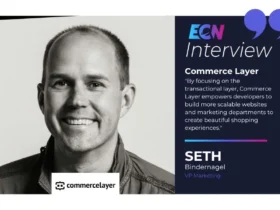
You’ve been on Amazon for a while now. Perhaps eBay or Etsy is your preferred marketplace. Either way, you’re starting to get a bit restless, you want to grow, expand and thrive.
You’ve decided to start your own independent e-commerce, dedicated to your products and growing your brand. Fantastic idea! Think of it like this- Marketplaces are like Ikea whereas your own web store is like being a carpenter yourself.
Creating your own web store is a big and exciting step in the development of your brand. Yes, your brand. Creating a little part of the internet for you to showcase your work is the first step in turning your hobby into a business.
Apply marketplace rules to your E-Commerce
Whether you sell on a marketplace or an independent e-commerce, there are a lot of similarities, and a lot of the same rules that you need to apply.
Customer identification: Who they are, Where they are, and What they want to buy
You need to know who your ideal customer is. Finding where they spend their time online and putting your product in front of them is paramount to reaching your potential. There are plenty of ways to find out where your customers are, and how to reach them. Social media can be a great tool to find this out as you test the waters of your own independent e-commerce.
Branding: The Freedom to decide who you are
Marketplaces offer you a certain limited level of brand expression. However, you will always be selling under their headers and footers, literally. Your own web store means you can also dabble as a web designer.

Kamena uses the same logo and consistent branding over all platforms.
Offering a proper brand to your store does wonders for the psychological impact that your store and your products have on your customers.
Competition: A Challenger Appears
Your competitors and what they are doing should be identified and closely monitored. Marketplaces put you side-by-side with your competition. Your own web store gives you much more space to be you, but your product still needs to be superior in some way. Differentiation is key, and what makes your independent e-commerce different can be in your products, your branding, your delivery and shipping services, or your customer service.
Crunching the Numbers and Analyzing Data
Most marketplaces give you at least a brief overview of the numbers and traffic to your listings. A good e-commerce platform will give you similar numbers and integration with Google Analytics will allow you to observe behaviour in even more detail.

Your venture into independent e-commerce means relying on Google Analytics to keep track of traffic
For example, when people finish looking at product X, which product to they then usually go on to look at? Information like this gives you insights that can be used for marketing purposes. You can even track important data like demographics and where your traffic is coming from- something that marketplaces generally can’t offer you.
Customer relations: Keeping your customer happy
If someone bought something from you on eBay and they weren’t happy, they’d leave negative feedback and that would be the end of it. If someone is unhappy with a purchase in your store, they can’t leave feedback, but they can instead drag your name through the mud.
With a marketplace, your customer service can only go so far. With your own store, you can create the customer service experience from start to finish, thus increasing your chances of return business. Your customer should always be at the forefront of your strategy. Keeping your customer happy is what will keep you in business.
Enjoy the new possibilities that an Independent E-commerce can offer you
If this is your first venture into your own online store, you’ll be surprised at a lot of things you now need to take care of. While these might seem like scary first steps, there are tons of resources out there to help you get started.
Payment gateways: Handle your payment and refunds without the third-party

You’re now responsible for how a customer can pay you. You aren’t limited by what payment methods the marketplace is integrated with, but you can now take payments in a variety of manners.
It’s important to understand exactly what methods of payment that your customers prefer, and you need to offer a variety of these payments. Not having the preferred payment option can be the reason that your customer abandons their purchase.
Marketing: How to get your products out there
You probably did some sharing of your marketplace links on social media. That simply will not suffice now. If you’re not undertaking a Facebook and Google AdWords campaign, you’re simply missing out on sales. You cannot throw enough money at a well-planned marketing campaign. Consider it one of the best, and relatively inexpensive, investments for your brand.
Another alternative includes using social media to add to these pay-per-click campaigns. Using social media is mostly free, and if your customers are heavy social users, this might be one of the best channels to use for communication.
SEO: If you build it, they will come
Marketplaces use SEO to a certain extent (usually just headings and tags). In your own store, SEO will significantly affect your results in all search engines. Make sure you’re on top of your SEO before undertaking paid campaign with Google or Bing. SEO extends to your product descriptions and alt-text on images.
SEO is a huge topic for e-commerce- as it’s the make or break factor in whether a customer can find your products. It’s important to understand the basics of SEO when launching your independent e-commerce.
Website Speed: The Faster the Better
You have 3 seconds for your whole web page to load. If your web page isn’t completely loaded in that time, people will leave. You also need to make sure your servers can handle spikes in traffic. No one can buy from you if your page is dead.
This is especially true for mobile users. As mobile search has now eclipsed search on PC, it’s become mandatory that your site be as absolutely clean and fast as possible, otherwise you could be penalized by Google.
Do your homework and do some math

Don’t be put off by these new acronyms and abbreviations. The world of e-commerce is full of helpful folk as well as apps and integrations that make all this a breeze. And this is where the beauty is – you control a customer’s experiences from start to finish.
Consider for a moment what you pay to list an item on a marketplace. Quite often, you will pay a fee to simply list it and then another commission-based fee once the product is sold. Your pocket can feel the burn quite quickly! When you have your own independent e-commerce store, you get all of your profits without having to pay a third-party (other than what you need for the costs of running your business).
Depending on the number of units you plan to sell, marketplaces can be more expensive.
Now consider for a moment the per-sale and transaction fees for a lot of e-commerce platforms. They seldom exist. Therefore, if you plan on making a profit equal to or greater than your monthly fee for using a platform, selling on a marketplace may be more expensive.
With some cash freed up by not paying marketplace fees, that gives you the ability to offer more competitive pricing, or allocate more funds to other areas of your business – Facebook Ads for example.
Social Media

If your brand isn’t already present on Facebook, Instagram and Twitter, you need to go back to e-commerce 101, possibly high school. These social media platforms (yes, all 3) are essential to almost every aspect of your brand.
Polish lingerie brand room669 use Instagram to show off behind the scenes of a photoshoot
Your job now is to use these channels to firstly show off the human side of your brand and secondly, draw people to your web store. No one will follow you on social media if you treat it like an advertising channel.
Your social media accounts need to add value (blog posts, giveaways) to your brand and offer an insight to the people that operate it (behind the scenes images, making-of videos). This is called content marketing and can quickly become a full-time job. Content, content marketing, social media and your web-store all come together to create what is called your ‘sales funnel’.
Content builds awareness, which builds visitors, which builds leads, which builds customers. Using a marketplace as the end of your sales funnel is oh-so wasteful and inefficient.
Bonus social media tip: Engage and talk to e.v.e.r.y.o.n.e who talks to you.
Transferring Loyalty
You have the email address of anyone that has bought off you in a marketplace. Your task is to get them to buy again off you, but this time from your website (You don’t want to pay marketplace commission if you can avoid it).
Make a fantastic looking email and send it out to these customers, telling them that you’ve got a new website. Sweeten the deal by offering them a discount code for buying in your new website.
Congratulations, you’ve now discovered email marketing!
International relations
No marketplace is truly international. You may have been sold the dream that ‘using x marketplace can take your sales worldwide’. Sorry, but no. Just how many eBay sales have you had in Bermuda? How are your Albanian sales on Dawanda?
Marketplaces are only as international the buyers that buy through that network are. If a marketplace doesn’t actively advertise in a region, people from there simply cannot buy your product. With your own web store, you’re in charge of where in the world your brand is seen.
International and cultural challenges
With your own web store, you can sell globally. Your only restriction is infrastructure. PayPal is possibly the most common payment method worldwide. What about the countries that PayPal payments aren’t accepted like Iran, Lebanon, Iraq and Pakistan? Provide an alternative option for them.
African countries are slowly warming to buying online, however, shipping is often extremely pricey and slow. Can you offer value-for-money to a customer in Cape Town if you’re based in Northern Canada? Another thing to take into consideration with your now global sales is buying culture.
Scandinavians expect their product to be at their door no more than 3 days after they buy it, whereas Australians are happy to wait. The Polish are attracted to a lenient returns policy as they like to buy something and return it if they don’t really like it. Will language be a problem? Perhaps offer a translated version of your web store if your brand gets some good traction in a non-English speaking country.
Advertising
Once you are set up for local, domestic and global sales, enter the world of advertising. Why are Coca-Cola, Ford and McDonalds so well known? Not for their quality products, but because they spend the GDP of a small country on advertising every single hour.
The same applies to smaller brands. Why do you know The North Face, Spotify and Tesla? Probably because they (arguably) reinvented the wheel, but they also spend a lot of money on advertising to get their product in front of your nose.
You need to do the same, but try starting off on a smaller scale. So many small businesses fail because the customer base isn’t there despite having a brilliant product. Avoid this problem by making sure people know your product.
PPC (pay-per-click) advertising is a good place to start. This includes uploading your product feed to Google, Facebook etc and ‘bidding’ on keywords associated with a product. When someone googles ‘Red dress’, your red dress will appear in Google search results.
Once people know you exist, follow through with exceptional goods, memorable branding and impeccable customer service.
Make it memorable.
How often do you hear someone say ‘oh I got this on Etsy! I found it on Amazon’? All too much. Being present on a marketplace means you get lost in the flood of people trying to make money on the side. With your own website, your job is to make sure they say ‘I bought this from John Smith Designs’.
Marketplaces have their place in the online selling community. They are great for launching a brand. However, there comes a time where being a big fish in a small pond is detrimental to what it is you do. Grow, expand, learn and enjoy the ride!
With all of the resources and benefits, there’s no reason to stay confined on marketplaces if your products are selling well. There are ways to use marketplaces with your independent e-commerce store to drive your traffic and get rid of low-selling merchandise. However, when you have control over your own e-commerce, with your own customer service, branding, and merchandising, you can become even more profitable than you were on a marketplace. Now that you have all the keys to succeed, what are you waiting for?





